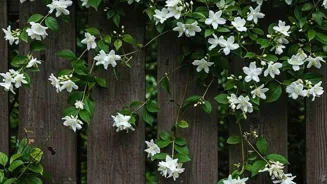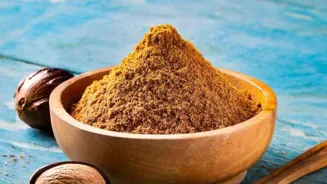Discover the allure of Indian jasmine plants! From Mogra to Raat ki Rani, explore 6 must-have varieties for your garden
Namaste, garden enthusiasts! Are you looking to infuse your home garden with the sweet,
intoxicating fragrance of jasmine? Known as "Mallige" in Kannada, "Chameli" in Hindi, and "Mogra" in many other Indian languages, jasmine is deeply embedded in our culture.
From adorning bridal hair to perfuming temples, this flower is a symbol of purity, love, and auspicious beginnings. This summer, why not bring these delightful plants into your own backyard? They are relatively easy to grow, and their enchanting scent creates a truly serene atmosphere.
Let's explore six must-have Indian jasmine varieties that will transform your garden into a fragrant paradise.
Mogra (Arabian Jasmine - Jasminum sambac)
Often considered the queen of jasmines, Mogra is perhaps the most popular variety in India. Its intensely fragrant, pure white, double-petaled flowers are a treat for the senses. Mogra is relatively easy to grow and can thrive in pots or directly in the ground.
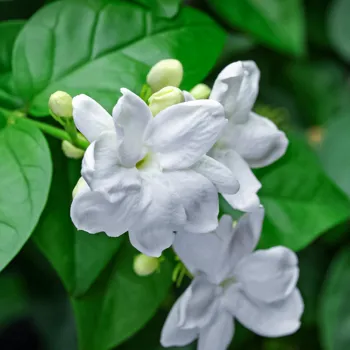
It requires well-drained soil and plenty of sunlight (at least 6 hours a day) to bloom profusely. Regular watering and fertilization are key to keeping your Mogra plant happy and healthy.
The intoxicating fragrance makes it ideal for planting near windows or seating areas, so you can enjoy its aroma throughout the day.
Juhi (Downy Jasmine - Jasminum pubescent)
Juhi is another beloved Indian jasmine, known for its star-shaped, white flowers that bloom in clusters. Compared to Mogra, Juhi flowers have a slightly more delicate fragrance. This variety is a vigorous climber, so it's best suited for training on a trellis, archway, or fence.
Juhi prefers slightly acidic soil and partial shade, especially in the hottest climates. Its cascading blooms create a beautiful visual display, adding a touch of elegance to any garden. Consider planting it near a gate or entrance to welcome guests with its subtle yet charming fragrance.
Chameli (Spanish Jasmine - Jasminum grandiflorum)
Chameli is prized for its strong, sweet fragrance, making it a favorite for perfumes and essential oils. This jasmine variety features slender, trailing stems and delicate, white flowers with a hint of pink.
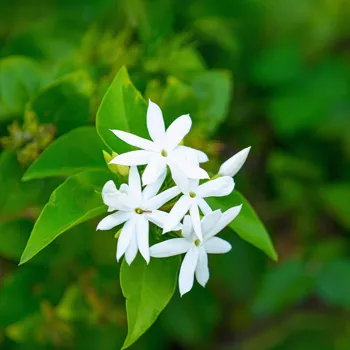
Chameli is relatively hardy and can tolerate a wide range of conditions, making it a good choice for beginner gardeners. It prefers full sun and well-drained soil, but it can also adapt to partial shade. Regular pruning will encourage bushier growth and more abundant blooms.
The intense fragrance of Chameli is known to have calming and relaxing properties, making it a wonderful addition to your garden.
Kundumalligai (Round Jasmine - Jasminum azoricum)
Kundumalligai, also known as the Azores Jasmine, is a stunning variety with round, button-like buds that open into fragrant, white flowers. This jasmine is known for its long blooming season, producing flowers throughout the year in warmer climates.
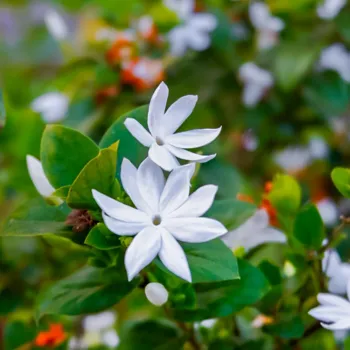
Kundumalligai is relatively easy to care for and can be grown in pots or in the ground. It prefers well-drained soil and plenty of sunlight. This variety is also relatively drought-tolerant, making it a good choice for water-wise gardens.
The unique shape of the flowers and their continuous blooming make Kundumalligai a standout addition to any jasmine collection.
Raat ki Rani (Night-blooming Jasmine - Cestrum nocturnum) [Not a true Jasmine but often referred to as such]
While not a true Jasminum species, Cestrum nocturnum is commonly referred to as "Raat ki Rani" (Queen of the Night) due to its incredibly potent fragrance that intensifies after dusk.
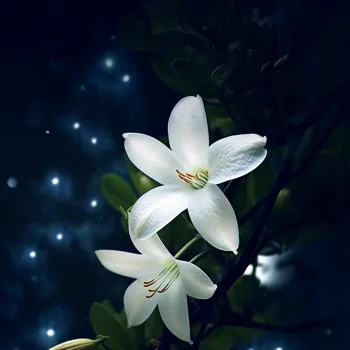
The small, greenish-white flowers may not be as visually striking as other jasmines, but their fragrance is unforgettable. Raat ki Rani is a fast-growing shrub that can reach several feet in height. It prefers full sun to partial shade and well-drained soil.
Be sure to plant it away from bedrooms, as its strong fragrance may be overwhelming for some individuals. This night-blooming beauty will transform your garden into a fragrant oasis after dark.
Motia (Belle of India - Jasminum sambac ‘Belle of India’)
Motia is a cultivar of Jasminum sambac, distinguished by its large, double flowers that resemble miniature roses. These intensely fragrant blooms are highly prized for their beauty and perfume. Motia is a relatively compact plant, making it well-suited for container gardening.
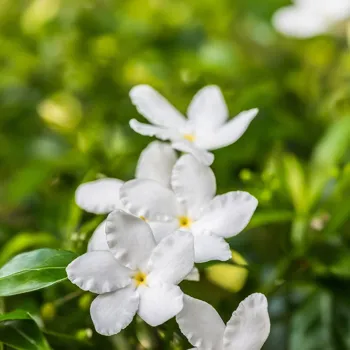
It requires well-drained soil, plenty of sunlight, and regular fertilization to thrive. With proper care, Motia will reward you with an abundance of fragrant blooms throughout the growing season. Its unique flower shape and intense fragrance make it a prized addition to any jasmine collection.
Tips for Growing Indian Jasmine Plants
Sunlight: Most jasmine varieties require at least 6 hours of direct sunlight per day to bloom profusely.
Soil: Well-drained soil is essential for preventing root rot. Amend heavy clay soils with organic matter to improve drainage.
Watering: Water regularly, especially during hot and dry weather. Avoid overwatering, which can lead to root rot.
Fertilizing: Feed your jasmine plants with a balanced fertilizer every few weeks during the growing season.
Pruning: Prune your jasmine plants after flowering to encourage bushier growth and more abundant blooms.
Pests and Diseases: Keep an eye out for common pests such as aphids and spider mites. Treat any infestations promptly.
With a little care and attention, you can enjoy the beauty and fragrance of Indian jasmine plants in your garden for years to come. So, go ahead and add these six must-have varieties to your collection and create your own fragrant paradise! Happy gardening!
AI Generated Content. Glance/InMobi shall have no liability for the content